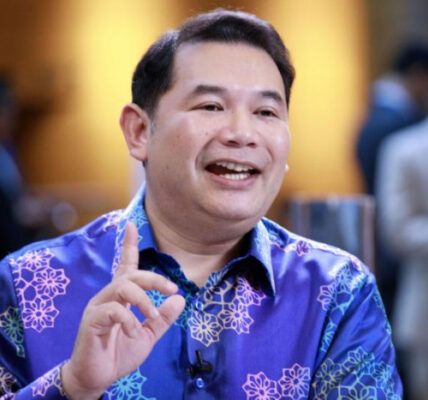New Delhi: India’s economy is expected to grow at 6.4% in the ongoing financial year, the government said in its first advance estimates for 2024-25, projecting a slower pace than the finance ministry’s and central bank’s already tepid forecasts.
The estimated 6.4% growth is also the slowest since the pandemic years, when India’s GDP contracted 5.8% in FY21.
Nominal GDP growth, which includes inflation, however, is expected at 9.7% in FY25, a tad better than FY24’s 9.6% pace.
The latest estimates indicate India will continue to rank among the world’s fastest-growing major economies in FY25. But the slowing growth, coming after FY24’s 8.2% sprint, will likely have a bearing on the government’s upcoming budget for 2025-26.
The first advance estimates of gross domestic product (GDP), typically revised over time as data coverage expands, serve as the foundation for the annual budget, which will be announced on 1 February.
India’s finance ministry recently said it expects the economy to grow at 6.5% in FY25, while the Reserve Bank of India estimated a 6.6% growth aided by rural consumption, government investment, and strong services exports. Economic growth has also been aided by robust agriculture, construction and real estate sectors.
However, India’s gross domestic product (GDP) growth has struggled this year chiefly because of persistent inflation, weak urban consumption, disappointing private sector investments, and sluggish manufacturing activity.
Government spending to rise
Per data from the ministry of statistics and programme implementation (MoSPI), government final consumption expenditure (GFCE), a proxy for government spending, is estimated to rise by 4.1% in FY25, up from a 2.5% increase in the previous fiscal year. Gross fixed capital formation (GFCF), a proxy for investments, is expected to rise by 6.4% annually in FY25, compared with a 9% growth in the previous fiscal year.
RBI in its December monetary policy committee meeting significantly lowered its economic growth projection for FY25 to 6.6 % from its earlier estimate of 7.2%, after India’s GDP growth slowed to 5.4% in July-September, the slowest quarterly growth in nearly two years. Growth slowed on the back of lower government spending due to the national election that spanned from April to June, and a fall in consumption, especially in urban markets.
However, the slow second-quarter growth is expected to be an outlier rather than a trend, with the government expecting the economy to rebound in the second half of the fiscal year.
Real GDP in FY25 is estimated at ₹184.88 trillion against the provisional estimate of ₹173.82 trillion for FY24, according to MoSPI data.
Sluggish private investment
Private sector investment remains sluggish despite favourable conditions, though private consumption has performed relatively well over a weak base, matching overall GDP growth, economists said. In FY24, private consumption had grown at half the rate of GDP growth.
“Rural consumption, which constitutes about 60% of India’s total private consumption according to the Household Consumption Expenditure Survey 2023-24, will receive a boost from healthy kharif (monsoon crop) production and promising prospects for the rabi (winter) season. This is reflected in higher agricultural growth estimated for this fiscal,” said Dharmakirti Joshi, chief economist at Crisil.
However, the urban economy faces the twin challenges of high inflation and slowing credit growth, as reflected in RBI data that shows moderated consumer confidence and decelerated retail credit growth, he said.
“We project the Indian economy to expand at 6.7% next fiscal in the base-case scenario, underpinned by public infrastructure spending, lower crude oil prices, normal monsoon, and monetary easing,” Joshi added. “That said, policymakers must remain vigilant in the face of escalating geopolitical and climate risks.”
According to the first advance estimates, the Gross Fixed Capital Formation (GFCF), which represents capital expenditure by the government and private sectors, is expected to rise by 9% annually to ₹62.01 trillion during FY25.
GFCF had slowed to 5.4% annually in the September quarter from 11.6% in the same year-ago period and 7.5% in the latest first quarter, indicating a slowdown in investments.
Private Final Consumption Expenditure (PFCE), or household spending—the biggest growth driver—is expected to rise at 7.3% annually to ₹104.05 trillion in FY25, according to the first advance estimates, after reporting a 4% growth in FY24.
PFCE, a proxy for private consumption, stood at 6% annually in the September quarter, down from a seven-quarter high growth of 7.4% in the preceding first quarter but above the 2.6% growth registered a year earlier.
Government spending is expected to rise 4.1% to ₹17.21 trillion this year.
Government Final Consumption Expenditure (GFCE) rose 2.5% in FY24. Interestingly, it had grown at 4.4% annually in the second quarter, swinging from a decline of 0.24% in the April-June period that was marked by disruptions in government spending due to the national election.
“The main indicators of the consumption so far indicate that the skewness in the consumption growth is correcting somewhat with the pick-up in rural real wages, two-wheeler sales, etc.,” said Paras Jasrai, senior economic analyst at India Ratings and Research. “The quarterly results of the FMCG companies also point to a sustained recovery in rural demand, which is favourable both for consumption as well as GDP growth.”
“However, the slack in urban demand is persisting as indicated by commentaries from some FMCG companies and also the decline in imports to the tune of 1.3% in FY25 (against a 10.9% growth in FY24). Consumption at the upper end is generally of an import-intensive nature,” he added.
India’s trade deficit is expected to fall to ₹1.09 trillion during FY25, down from ₹3.99 trillion in the previous fiscal year.
Net exports, a growth driver, have been in negative territory in recent years, becoming another drag on growth.
“A range of economic and strategic risk prevails post the imposition of the tariff policies by the incoming US President (Donald) Trump. This could have far-reaching impact on global trade, with any retaliatory measures pushing towards the possibility of a tariff war,” said Jahnavi Prabhakar, economist, Bank of Baroda. “This remains a global risk and will adversely impact the global economies.”
Meanwhile, India’s manufacturing sector, which represents approximately a sixth of the country’s GDP, is expected to grow at a more modest pace of 5.3% year-on-year in FY25, down from 9.9% in FY24, according to the latest MoSPI data.
Construction output is forecasted to expand by 8.6% in FY25, a slight decline from last year’s growth of 9.9%.
However, growth in agricultural output, contributing to about a fifth of GDP, is anticipated to rise significantly to 3.8% in the current fiscal year, a notable improvement from FY24’s 1.4% growth, owing to good rainfall received in various parts of the country.
“We expect that the budget may assume a 10.5% nominal GDP growth for 2025-26 consisting of 6.5% of real GDP growth and nearly 4% of IPD-based inflation,” said D.K. Srivastava, chief policy advisor at EY India. “The likely target for fiscal deficit in 2025-26 may be 4.4% of GDP, which may be accompanied by a fall in the debt-GDP ratio, thereby confirming continued progress in fiscal consolidation.”
IPD-based inflation, or inflation based on the Implicit Price Deflator (IPD), is a measure of the overall price level of goods and services in an economy.
The government “would do well to continue to emphasize infrastructure expansion as the core of its growth strategy in the presence of continuing global uncertainties,” Srivastava added.
Catch all the Business News , Economy news , Breaking News Events andLatest News Updates on Live Mint. Download TheMint News App to get Daily Market Updates.
MoreLess





